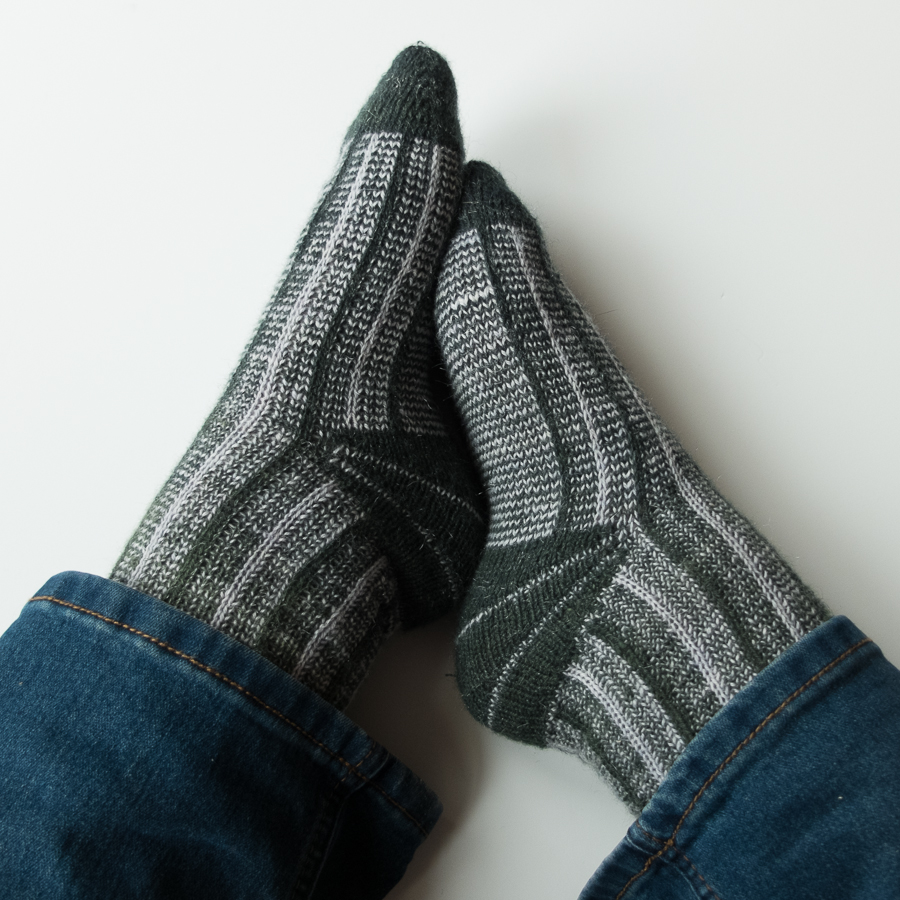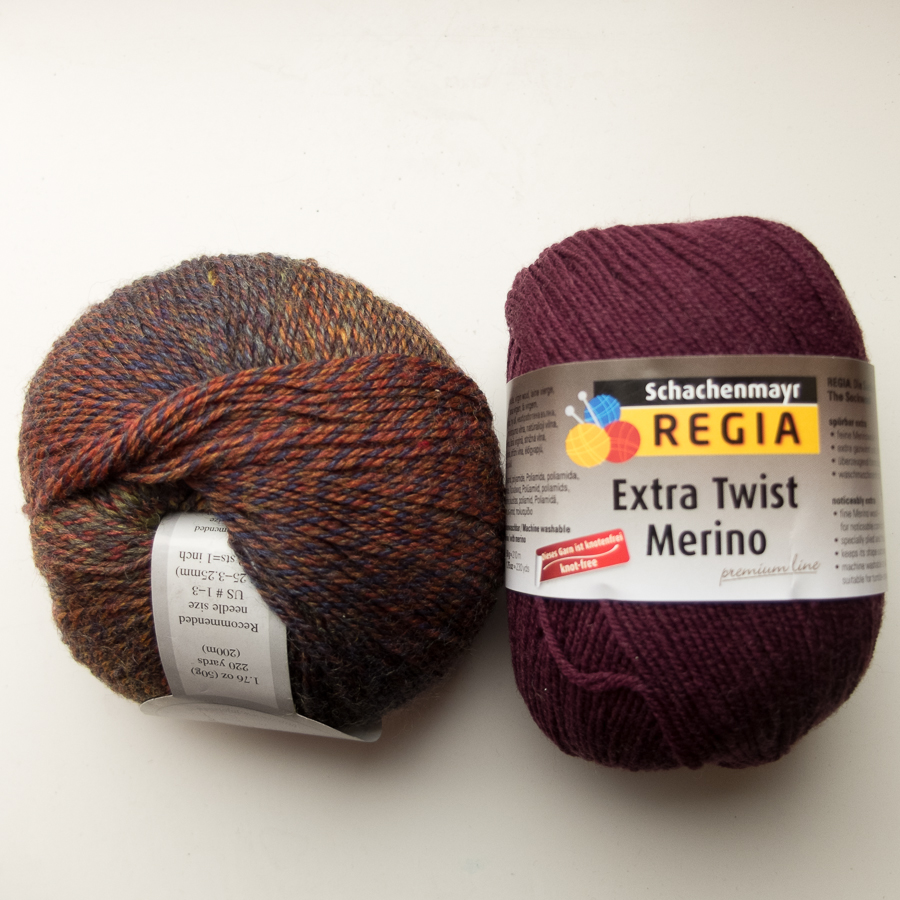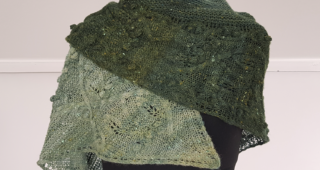Over a month ago, Ravelry introduced a new website style. Just like that: one day you log in and the old design is there, the next day it has suddenly changed without warning. Generally, people don’t like change even if it is a change for good, so companies usually ease their users into the change by gradually changing the UI, or by having an opt-in option for a while with feedback possibilities to optimise the design. A beta test period to work out the kinks. But Ravelry decided to just press “update” and let the chips fall where they may.
Of course not everybody liked the new look, but that is to be expected. Not everybody has the same taste, after all. The previous design with its characteristic pale green and Ravelry red and the yarn ball logo were ditched in favour of bright teal, yellow, and coral (‘cinnamon’), massive drop shadows, animations, high contrast, and a not-entirely-round, gendered blob called Lumpy that was to be the new face of Ravelry. Why, you ask? In Ravelry’s own words: “to move away from pinks and the pale greens to a more gender-neutral, polished look and feel”. I’m not entirely sure what was so gendered about the old look (to me it looks quite neutral, as opposed to the cutesy teal & coral and the twee icons), but hey, it’s their website, so sure, redecorate.
But something unexpected happened: people started reporting all kinds of health issues that were linked to the new design. Headaches, migraines, eye-strain, and yes, even seizures. People with visual disabilities reported that their screenreaders did not work with the site anymore. People who are already restricted to being at home because of Covid-19 suddenly lost access to their supporting community. Reports poured in. Threads were started in the feedback group “For the love of Ravelry”, but Ravelry did not take immediate action. The new design was not rolled back, but after a few days, an option to use “Classic” Ravelry was added to the menu. However, before you could turn that on, you first had to:
- Know that the option existed (it was not really advertised).
- Log in using the new design (going through some migraine inducing animations).
- Navigate to the option in the new design.
And that was already too much for some people who were sensitive to the animations (with their parallax movement), the high contrast, the flickering refreshes, the weird, dizzying font, and the way the design of the pages would lead your eyes around to all the buttons and icons that were screaming for attention instead of supporting the content of the page. More seizures happened and more people had migraines. The feedback threads on the forum were heavily moderated and any post questioning the status quo was hidden from view and archived by a moderator in the blink of an eye.
A tone-deaf blog post about the design appeared on the front page. Later, another blog post was posted that sort of brushed against the problems a bit : “For those of you who are having issues with the New Ravelry design, we’re truly sorry that aspects of the site are not usable for you.” Aspects? There are many people who cannot use the site at all at the moment. Reports are being ignored and discussion is being silenced. The post ended with bragging about how many new members have signed up… What kind of message does that send? To me it sounds like “We don’t need those pesky disabled people, we have plenty of new members coming in who don’t complain about silly stuff like accessibility”.
People were trying to be heard. Most Ravelry users are usually very happy with what the website offers, and they want Ravelry to succeed. Ravelry implemented a Trump-ban last year and drew a line in the sand of where tolerance ends. They were applauded for that by those who agree that racism, sexism, ableism, and other bigotry should not be tolerated. For years already, Ravelry has celebrated Pride month and the platform seemed to do a good job being inclusive and progressive. But in this case, they were not. People were getting hurt and all they were asking for was for the Classic Ravelry option to become the default until the problems with the new design were solved. But Ravelry chose not to do that.
Since Ravelry seemed to be deaf to the complaints, the discussions started to move to other social media. People started to warn each other about the potential dangers of visiting Ravelry on Instagram and Facebook. Designers removed their links to Ravelry from their websites to prevent people from harm. Some designers were in a pickle: the main platform through which they made a living were now inaccessible to (some of) their customers, and maybe also to themselves. Others did not depend on Ravelry as much and moved to different platforms.
Other media picked up on the problem. A mansplaining opinion piece appeared on the Psychology Today website. In short: according to him, this was all mass psychogenic illness (read: fake). In the first version of the article, “knit-steria” was mentioned as an extra insult to the mostly female Ravelry users.
Historically, hysteria has been used as a means to gaslight and silence women, so to link this to the health problems that some Ravelry users are currently experiencing is a low blow. Interesting how people experiencing something similar separately in their own houses without communicating somehow experience this because of “mass suggestion and the redefinition of various ailments as Ravelry-related”. Cool story, bro.
By the way, the writer is a sociologist, not a psychiatrist or neurologist, so he has no business diagnosing people. He should also read up on website accessibility for those with vestibular disorders. It’s a real thing, and it has been researched. Good website designers take these possible accessibility problems into account when designing. Imagine finding out that you have a vestibular disorder because of the carelessness of a web designer, and being told that you’re imagining things, that you’re being dramatic, when you’ve just had a seizure that cost you your driving license… that happened to Countess Ablaze, by the way.
I also have a Ravelry Store, and when it became clear that Ravelry was ignoring health concerns, I did not want to support them financially anymore. Whenever a designer sells a pattern, a small percentage of the fee goes to Ravelry, so I decided to deactivate my store. I might at some point make my patterns available here on my own website, but frankly, I don’t have the energy for that right now. I tried adding the WooCommerce plugin, but I have to look into how that works exactly and it takes time and energy to do that. So for now, my patterns remain unavailable. If you want to knit one of my patterns in the mean time, don’t contact me, contact Ravelry instead and ask them to fix their site.
Meanwhile, Ravelry has sent out some surveys that clearly imply that they don’t care about the real problems with the website. The most recent survey contains screenshots of the new design, so people who have problems with that design cannot do the survey. Bug reports about the new design seem to be ignored while other bug reports receive a prompt reply and/or fix. Since last week, even the purchase confirmation e-mails from Ravelry showcase the new design. I’ve noticed that I don’t really visit the site that often anymore. It just doesn’t feel right. I want my Ravelry to be inclusive, and right now they seem to be very selective in who they want to include. Having a visual disability is not a choice. Pushing an inaccessible design unto your members is a choice.
Some people say “but Ravelry is free, so you shouldn’t complain about what you get”. That’s just not true. Ravelry became and remains great through the labour of its members. We added patterns and yarns to the database, added keywords, set up interesting groups and provided the content, shared our projects and photos, and that made the platform valuable and desirable to be on. Some of us still remember the time when the Ravelry founders asked for money to buy better servers and some of us send a donation every year. When you purchase a pattern through Ravelry, part of the fee goes to Ravelry. Designers and dyers pay for showing their ads. So no, it’s not free. Free or not is not only about money.
In the end, Ravelry consists of two things: the database and the community. The database is great and unique and accounts for the website’s basic value. The community though is what keeps people there for longer than the occasional visit, makes them click on ads, purchase patterns that are recommended by their friends, visit wool festivals that they read about on the forums, etcetera. Members contribute to the community and the content freely because they appreciate the platform.
Giving something away does not make it worthless, though. On the contrary. I only give away my precious time and resources to those who deserve it, to those who are knitworthy. Life is too short to spend your energy on those who do not appreciate it.
At first, I was hopeful that Ravelry would come around and fix the problems. But after a month, my trust is completely gone. Even if they do come around, I won’t feel the same way about Ravelry ever again.
I’m still using Ravelry a bit for finding patterns (but I don’t buy them via the website anymore). For now, I’m using Classic mode, because the new design gives me eyestrain and headaches. Once Classic mode is gone, I really don’t know what I’ll do. Use the theme made by Evanita Montalvo? Just leave? Let’s hope that Ravelry chooses to acknowledge the problems and fixes them, even if it’s late.





Did you see the message from Jessica? It was posted on the blog, instagram and the frontpage of Ravelry yesterday, in an attempt to make it accessible to everyone. It’s long overdue, but I’m extremely glad they have finally responded to the issues that have been raised, because I found it not like them to (not) respond to genuine problems the way they’ve responded so far.
Yes, I have seen that message, thanks. And while I appreciate Jess reaching out, I must say that so much is lacking from it. I will write an update to this post to explain what I mean.